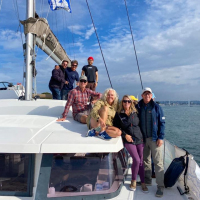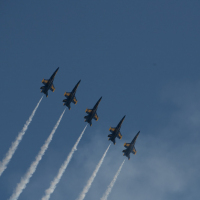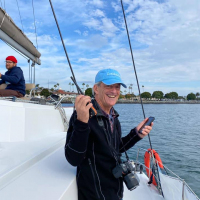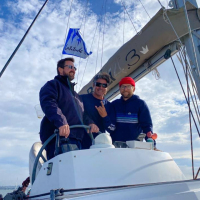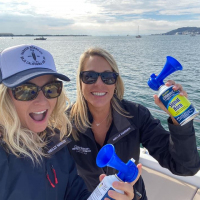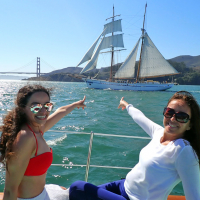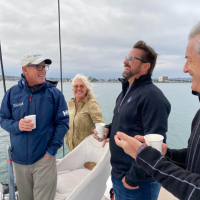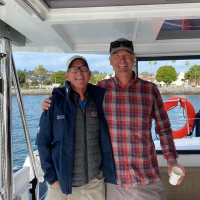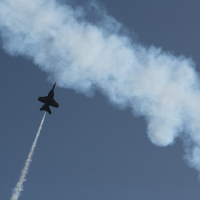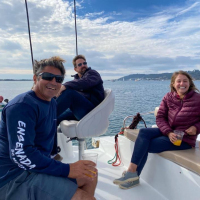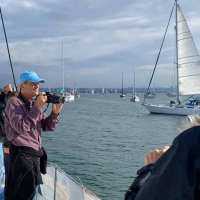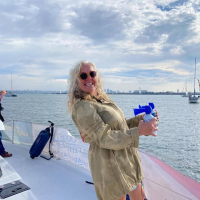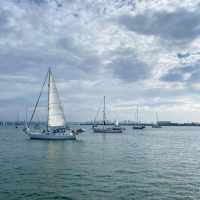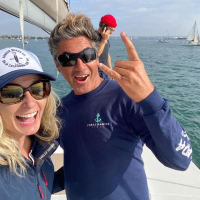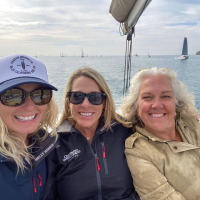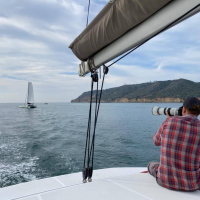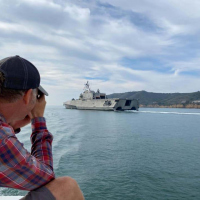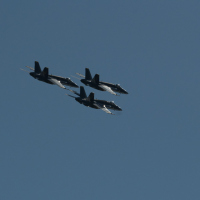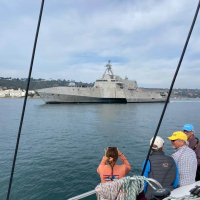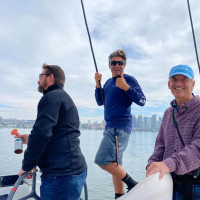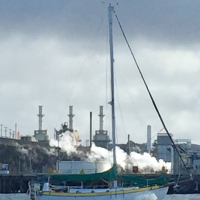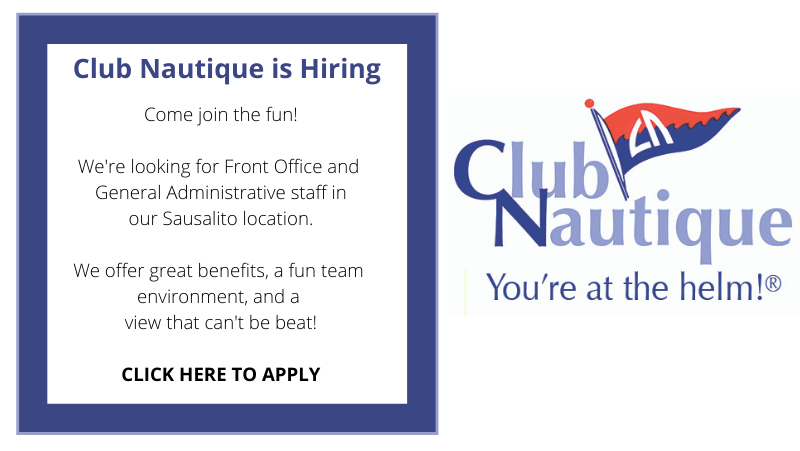
Baja Ha-Ha — Who’s Sailing South to Mexico?
The 27th Baja Ha-Ha fleet is on its way to Mexico. On the morning after last Sunday’s Halloween Kick-Off Costume Party, the majority of the 194 boats that had signed up for this year’s rally departed Shelter Island and headed south. We say ‘majority’ as some sailors are meeting the fleet in Ensenada, and some farther south. For example, Scott and Moira Fisher of the Endurance 35 Arctic Willow were planning on sailing right past the US due to the COVID-based border restrictions that were in force at the time of their passage.
All in all it’s been a banner year for the number of boats and sailors who have joined the Ha-Ha. It’s clear that after a year of isolation and additional protection in the form of vaccines, people are ready to start cruising again, and that much of the world is reopening or is in the process of learning how to accommodate a ‘closer to normal’ cruising world.
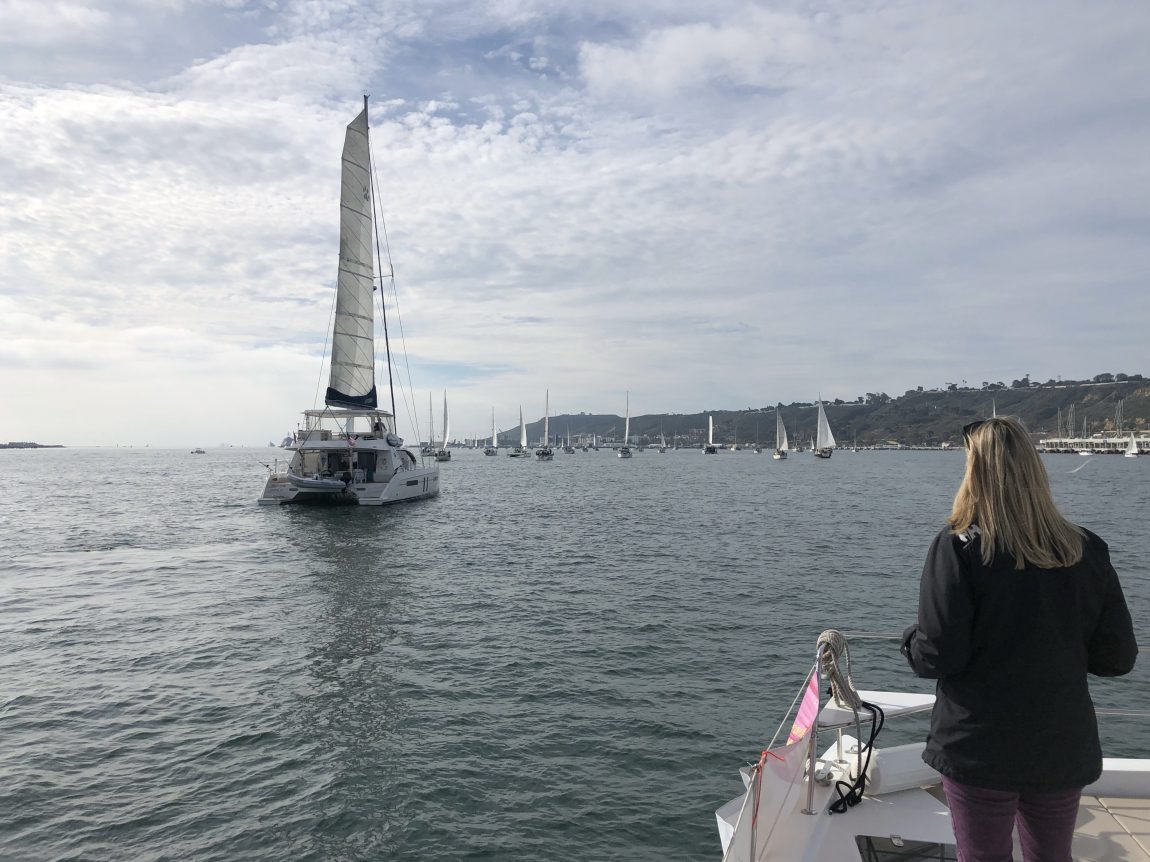
The boats themselves range in size from 33- to 72-ft — and there are 16 multihulls, and five powerboats in the ‘No Comprende’ division. As the fleet makes its way south, we bring you a couple more random peeks at folks who are participating in this year’s event, this time both aboard multihulls.
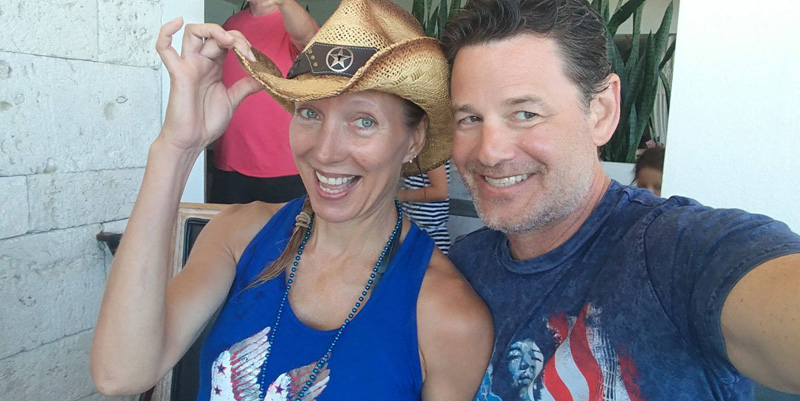
The Lagoon 400 S2 Aria’s Song is sailed by Richard and Carolyn Doherty from Porter Ranch/Channel Islands. Richard, an engineer, will be sailing with his wife Carolyn, who is likely the only animal trainer in the Ha-Ha, and two crew. One of the crew will be Kelly Dorsey, a marketing representative.
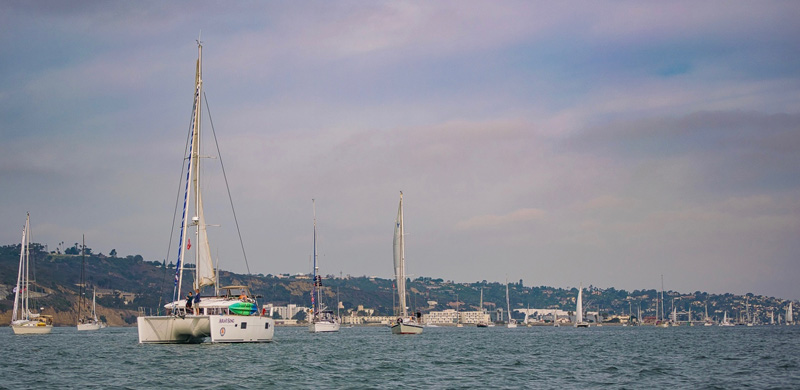
“We’ve been sailing all over the warm-water areas of the world, but this catamaran is the first boat we’ve owned,” Richard said. “We’ve enjoyed her for six years on the lovely California coast, but it’s time to move on. We’re not sure in which direction we’ll head after the Ha-Ha, but likely toward Panama.
“Our dream destination would be the Maldives, but jeez, they are a long way away. We’re very happy with our cat, but if we had to choose, we’d probably go with a megayacht.”
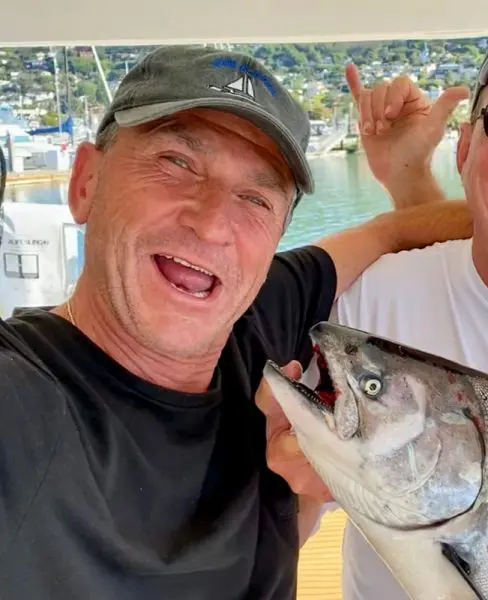
Another multihull will be Steve Skolnik’s Leopard 58 cat, Wine N Down. Steve lives in Sonoma and is taking his boat south from his homeport of Marina Bay in Richmond. Also aboard will be Steve’s friend Bob Martin. Perhaps more crew will join, as the boat has six cabins and seven heads.
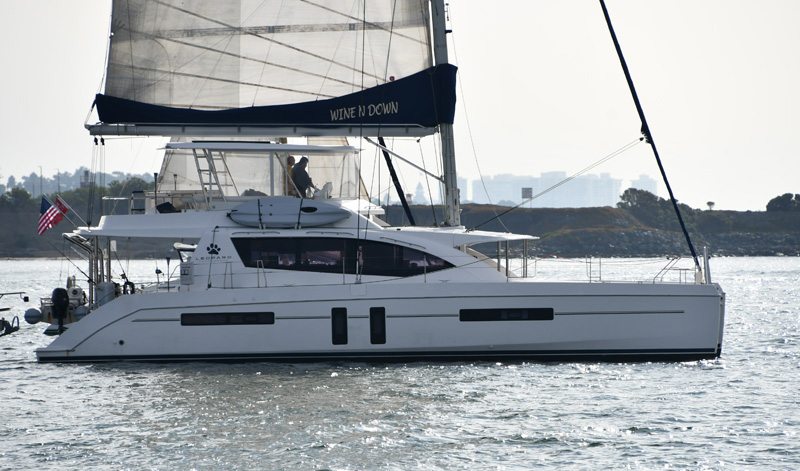
Steve has been boating for 36 years, but sailing for only six years. He’s owned seven boats and has owned Wine N Down for three years.
His longest passage to date has been nine days from Virginia to the Virgin Islands, which is normally a much more challenging passage than San Diego to Cabo San Lucas. His plan after the Ha-Ha is to return to the Virgin Islands and then Europe, although he really wishes he could do it with a solar-powered catamaran.
Steve reported to the Poobah that he likes angel food cake, and his favorite quote is “Abandon ship!”
According to early reports from underway, the first leg south was a beauty with steady 15+ knot breezes from dead astern, and Chuck Skewes reporting great sailing and fishing. This meant the first boats into Turtle Bay were arriving on Wednesday afternoon after a brisk, bumpy sail. Some drama occurred with the Outremer 42 catamaran Tumbleweed issuing a ‘Pan-Pan’ to alert neighboring boats that they had a fire in one of their engine rooms. Fortunately, the fire was brought under control and the boat made it into Turtle Bay safely.
The fleet is now resting up in Turtle Bay and will be heading out to donate baseball gear and ‘play ball’ on the renowned Turtle Bay baseball field. After that, it’s a beach party and a sail to Bahia Santa Maria.
Keep an eye out on ‘Lectronic Latitude as we share news from the fleet and more Ha-Ha sailors’ profiles in the weeks ahead.
Max Ebb — Will You Still Luff Me Tomorrow?
“We need to twist off the main,” I shouted to the mainsail trimmer as I struggled with the helm to keep the boat from rounding up in another strong gust. “Trav up and ease sheet! We’re overpowered!”
The weather had pulled a bait-and-switch. The day began clear and warm with just a hint of a mild winter sea breeze, a welcome change from a summer of high wind and fog. But then the afternoon wind filled in as if it were still August, and we were caught with the big jib up and another mile to the weather mark.
“This feels much better,” I confirmed after the adjustments had been made and the top of the main was luffing. “I’m back in control.”
“But like, we’re going slow,” complained Lee Helm. “Luffing equals drag.”
Lee is a grad student studying naval architecture at the university, and she usually races on much newer and faster boats than mine. But when the day begins with too little wind for her kiteboard and there’s a free lunch in the deal, sometimes she’ll come out and call tactics for me. She’s usually right about lift and drag.
“What else can we do?” I asked. “Not enough time on this leg to reef.”
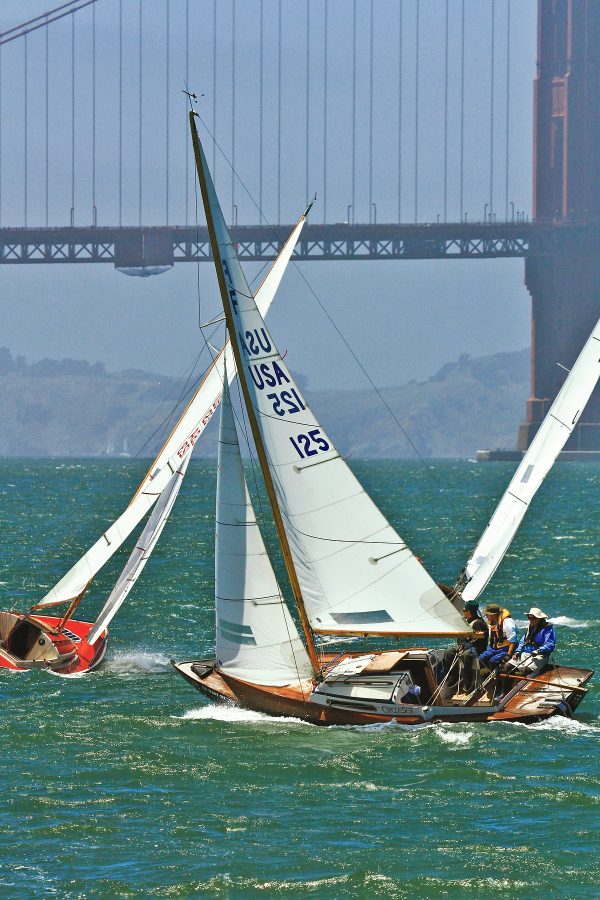
“That’s not very fast either,” she said. “Shorter span, more induced drag. We need to, like, blade out the top of the main and put it to sleep.”
“Wouldn’t that have the same effect as reefing?” I asked. “If the sail is only loaded on the bottom two thirds, won’t that be the same as reefing?”
“The top of the main still works as a span extension, ’cause it, like, prevents the tip vortex from forming. Faster than reefing, and much faster than letting the top part luff. But we have to make the top of the main really flat.”
“Also, let’s straighten the headstay so we get a flatter jib,” suggested the jib trimmer. “Can we get more backstay tension?”
“That will just bend the mast more, and the headstay will go slack,” the mainsail trimmer pointed out. “But we can move the jib cars back to put more twist in the jib.”
“Do it,” I said to the jib trimmer, thinking that adding the tackle for in-flight adjustment of the jib leads a few weeks ago had been a good upgrade.
Read on in November’s Latitude 38 to find out if Max was right.
Warm the Winter Blues in the Caribbean
As the days get shorter and colder, do you catch yourself daydreaming of the Caribbean more than ever? We are too! Join us this winter for a week or two as we cruise St. Maarten and St. Barths on a luxurious Dufour 46GL.
Cruise with fellow Bay Area sailors and Q&M Travels for a hands-on adventure, complete with private instruction from professional sailors. Our Co-captain Mitch is a veteran instructor of OCSC Sailing and spent many years teaching young sailors in the Caribbean trade winds. Healthy and delicious meals aboard are included, curated by our co-captain and galley chef Quincey!
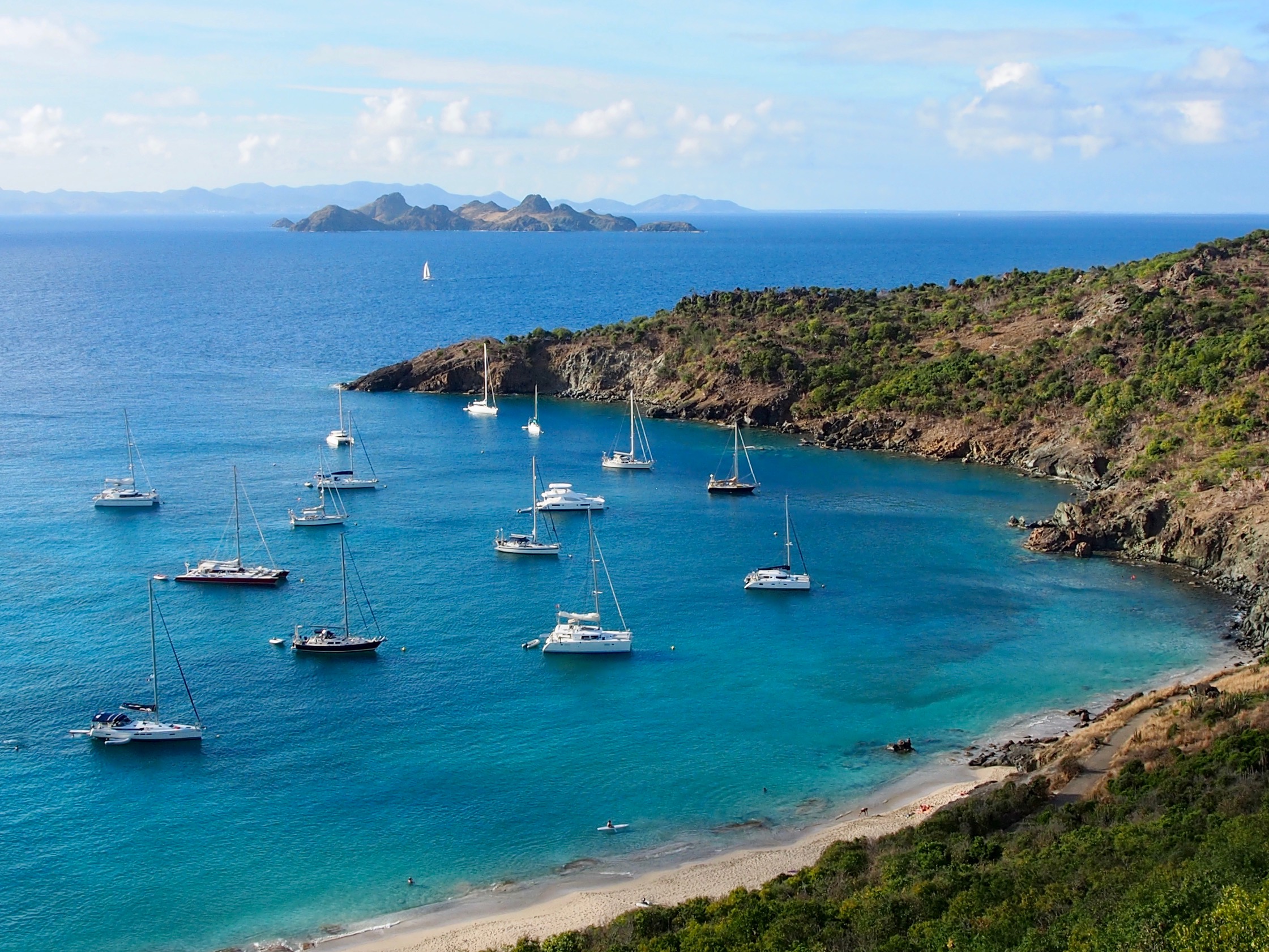
We’re offering a significant discount for Latitude readers – $1000 off your cabin! There are two weeks available this December — Sunday 12/5 to Saturday 12/11, and Sunday 12/12 to Saturday 12/18. Only one cabin left for each week (double or single occupancy).
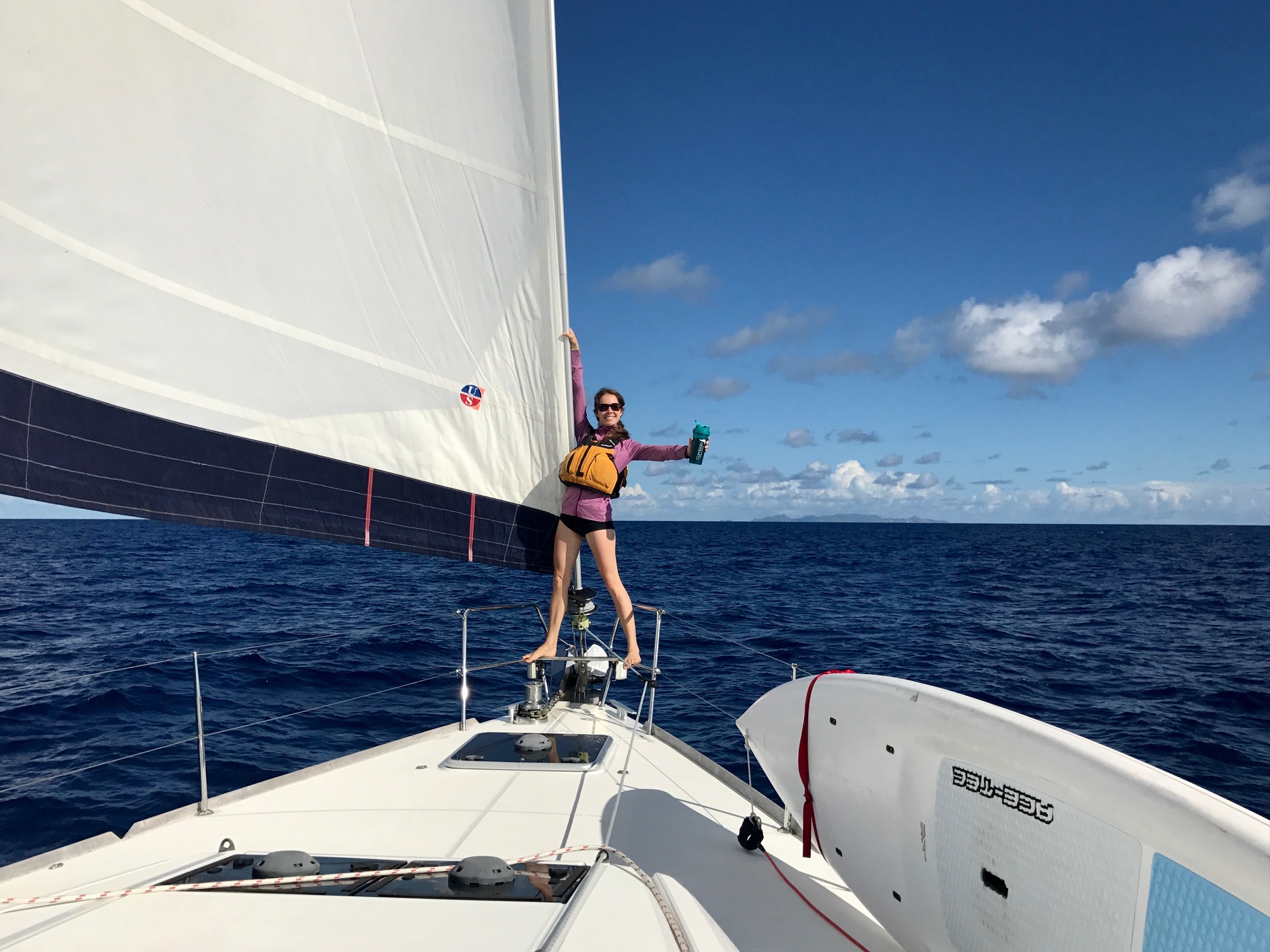
St. Maarten and St. Barths have been diligent with COVID testing and vaccination efforts, and are now able to loosen travel restrictions for fully vaccinated travelers to visit their beautiful islands.
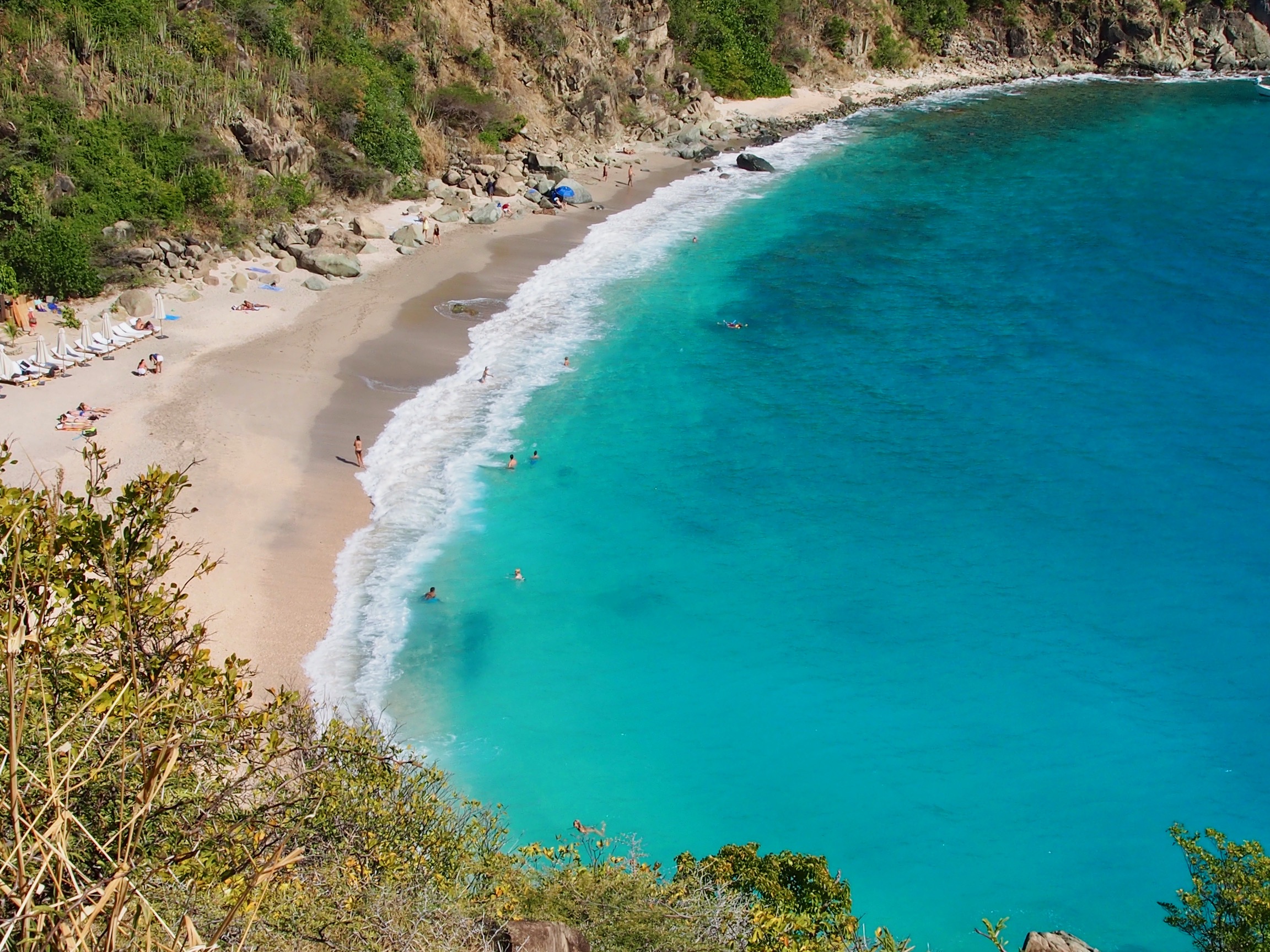
Click here for more details, sample itinerary, and travel logistics or email [email protected].
Lessons Learned from a Windsurfing Rescue
The following account comes from Tony Swei, who was windsurf-foiling off Treasure Island in October when he got separated from his gear. When we saw Mr. Swei a few days after the incident, he told us of his years of windsurfing experience: “I feel like I’ve been training 30 years for that.”
I launch from Treasure Island around 4:30 with a 6.7 race sail; the wind was about 20 when I was rigging, but 50 yards from the point, it is more like 25. I’m overpowered, but having a blast and pushing new high speeds.
At about 4:45, I go on a downwind reach, about three quarters of mile out from the launch. A gust hits — I let go, and see the rig still foiling without me on it. Because the board is above the water and the foil is so efficient as you dismount, it can keep going without a rider. My gear lands about 50 feet away from me.
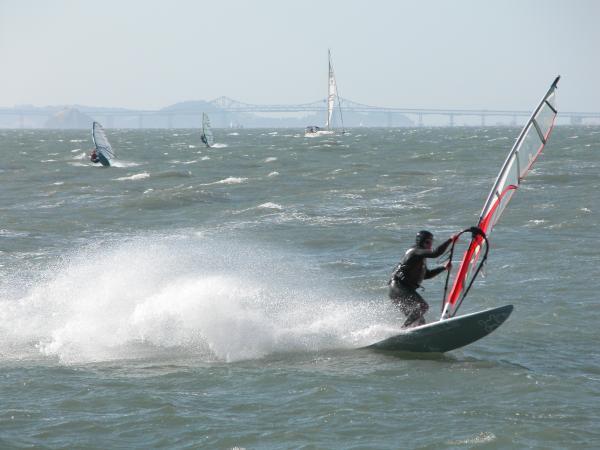
I’m winded because of the overpowered reach, but try to sprint after the rig. No success — it is getting blown downwind. I try a couple more times with no success. The ebb is maybe 1.0 knots, so as I am getting pulled to windward, the rig is being blown downwind. The board is right side up with the foil down. I believe this makes matters worse as the long foil mast seems to keep the board pointed downwind, so it is efficient going downwind. My fat self with a harness in an ebb is efficient going upwind.
It is a very bad situation.
After one more sprint, I realize that I’ll never catch my gear and stop to rest. At three quarters of a mile offshore, it’s early in the day and I am pretty well rested. I’ve had a big lunch, and there are two hours of daylight left, so I start swimming. I consider removing my harness as it’s creating a lot of drag, but it’s also helping me float, so I leave it on.
After about 20 minutes swimming in high chop and not being able to tell if I am making progress, I decide to activate my emergency beacon. I see wingers and windsurfers in the distance, so I swim in the hopes that I cross one of them and can wave them down. In about 10 minutes, I see WB Peale — an experienced ‘TI Roller’ — downwind of me, and wave him down. Knowing his skill level and experience, I’m greatly relieved. I tell him that I’m warm and able to float well, and ask him to keep an eye on me. After another 10 minutes of swimming, another windsurfer comes by. He tries valiantly to tow me, but to no avail. I ask him to circle me as well, and he goes off.
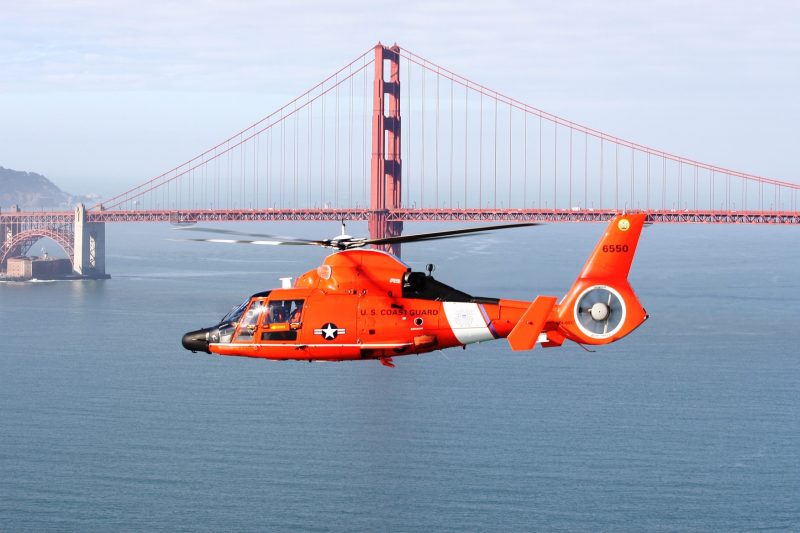
WB makes another pass and I tell him to call for a rescue. The active light on my beacon is flashing, but I want to make sure the Coast Guard has been alerted.
Another 10 minutes of swimming, and Todd Whyte, another senior TI Roller, comes to me. There’s relief now that two veteran sailors are helping me. He asks me if I am OK, and at this point, I am less confident, a bit tired, and feeling colder. Yet another sailor, Greg, joins us, and we see a fishing boat about 200 meters to the north. I tell them to go off and try to get the boat to help. I also decide at that point to lose my harness, and I can immediately swim maybe three times faster. I see Todd and Greg make contact, and the boat turns around, Greg comes back, and stops to stay with me. I see the boat head toward Emeryville, as if they’re giving up, so I ask Greg to stay with me as his sail is much more likely to be seen than my puny yellow helmet. Greg is a stud and obliges immediately.
We see a Coast Guard helicopter in the distance — they are sweeping back and forth downwind of the launch point, and we realize that they don’t see us. So Greg gets on top of his board, removes a red overshirt he has on, and starts waving it. I pull the sail tip up and raise it in a body-drag position. The helicopter finally sees us and directs a Coast Guard boat to come get us. This only takes a few minutes, and I’m onboard. We make sure Greg gets back to shore where people are there to help him up. Despite trying to prepare for such an event, I made several mistakes:
Swimming: On the boat, I asked the crew, and they advised that since I had a working beacon, a better choice would have been to conserve energy and wait for rescue.
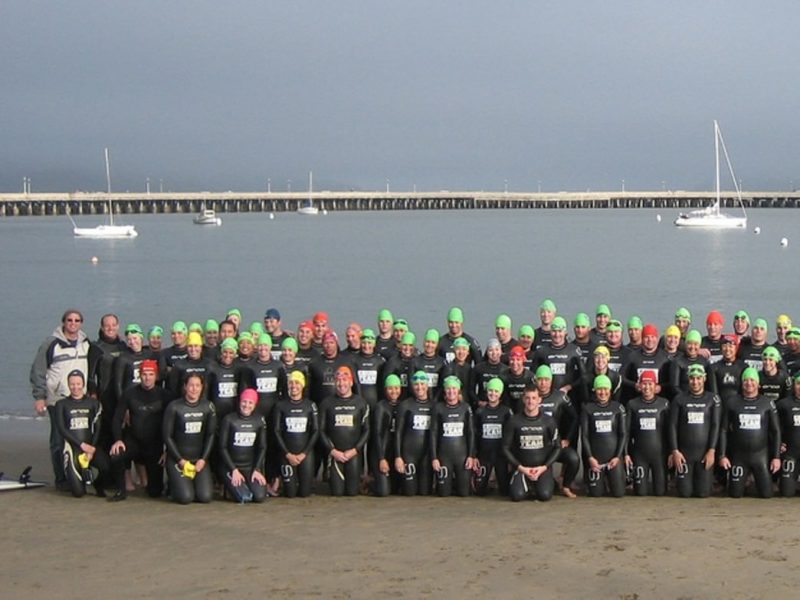
Losing the harness vastly increased my swimming efficiency. I think if I had immediately dropped my harness, I could have caught my equipment.
Not holding the beacon steady and pointed up: I am sure this was explained in the instructions, but in the heat of the moment, it did not occur to me. The Coast Guard crew says these beacons are highly reliable, but they could not get a precise location because I was swimming and it was bouncing around my neck. They could clearly hear/monitor my ping, but the location was not clear.
To my credit: Swimming may have put me in a position to see WB, Greg, and Todd; I’m not sure if this would have happened otherwise. So this was a judgment call — I would expend energy, but thought I had a chance at someone seeing me.
I had a beacon: I have tried using marine radios in the past, but could never get a bag that didn’t leak, and was always worried that I wouldn’t remember to charge it. The beacon — an ACR ResQLink 400 — has disadvantages in that it is a single-purpose, one-way communication device. There is no way to talk to anyone, but the system supporting it works very, very well, The beacon is fully waterproof and has a five-year battery. I’m considering carrying two communication devices for places like TI.
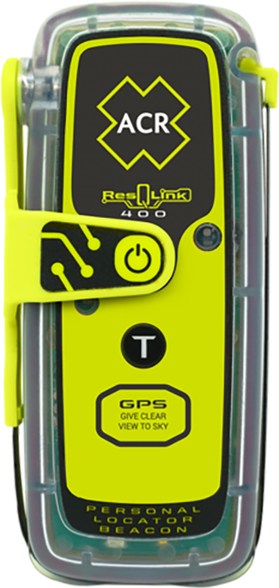
The Coast Guard notified my wife within minutes of my beacon being activated, and the boat crew said they launched onto the water eight minutes after my beacon was activated. I was proud to be a taxpayer that week.
I had a new-ish 5-3 wetsuit: probably the most important piece of safety gear. I felt pretty warm most of the time, but it would have been better to have a board to float on to keep my torso out of the water.
When I get back to my cell phone at the car, I see a number of SMS messages from an automated system that says my beacon has been activated and to click a link to call in to give an exact location. The emergency system works well, and they have implemented multiple services to alert everyone involved and to verify information. I am impressed.
To top it all off: I got my gear back. My rig was found at Emeryville. Turns out a windsurfer/kiter who lives on a boat in that marina saw it on the rocks and knew to notify the Coast Guard. There is some damage, but given the circumstances I cannot believe my luck.
Sailagram: A Snapshot of October Sailing
October was jam-packed and felt as if it flew by. It kicked off with Fleet Week and finished off with the Baja Ha-Ha Kick-Off Party, with lots of great sailing in between. Check out this month’s Sailagram to see all the sailors who raised their sails.
Did you miss out on having your photo featured this month? Send your sailing photos to [email protected] to be included in our next Sailagram.
Club Nautique Office Staff Job Openings
Club Nautique is hiring. Apply here.

